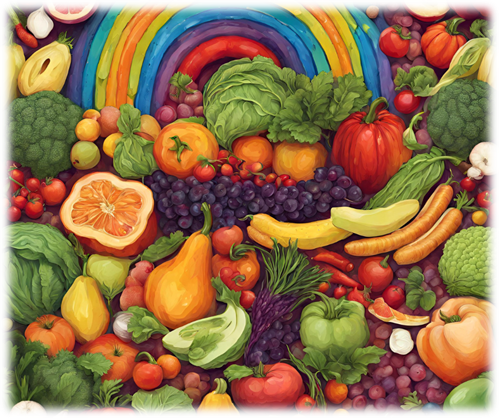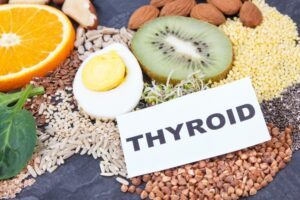Not Just Colorful – Healthful: The Mind Blowing benefits of Rainbow Diet

Have you heard about Rainbow Nutrition? Do you know how incorporation of multi-colored fruits and vegetables impacts your health? Nature created foods in such a way that each color represents a unique set of nutrients and phytochemicals that contribute to overall well-being. From reducing inflammation to promoting digestive health and enhancing cognitive function, the rainbow diet is a surefire way to optimize our health and vitality. Let’s delve into the incredible benefits of each color group and explore the specific foods that make them shine.
Red Foods and Inflammation
Red foods, such as tomatoes, watermelon, and red capsicum are rich in antioxidants and red-food carotenoids like astaxanthin and lycopene, they possess potent anti-inflammatory properties and also modulates the immune system through their high vitamin C content. Studies show that regular consumption of tomatoes and tomato products has been associated with a reduced risk of prostate cancer. Watermelon, with its higher lycopene content and excellent bioavailability, may aid in treating mild to moderate erectile dysfunction. Red vegetables, like beets, impact the nitric oxide pathway, leading to improved circulation and a decreased risk of heart disease.
Orange Foods and Reproductive Health
Carotenoid-rich foods, such as oranges and carrots, offer incredible benefits to our reproductive health. These foods contain endocrine-regulating activities that can support processes like ovulation. The abundant carotenoids and vitamin C in oranges contribute to healthy vision and cell growth. Citrus fruits, with their unique phytonutrient hesperidin, enhance blood flow and circulation. Regular consumption of oranges may help keep cold hands and feet at bay.
Yellow Foods and Digestion
Yellow foods, including bananas and pineapples, play a crucial role in supporting digestion due to their high fiber content. Yellow coloured foods promote healthy and diverse microbiomes, while aiding in gastrointestinal health through gastric motility and digestive secretions.
Green Foods and Cardiovascular Health
Green foods, such as kale and broccoli, spinach, are nutritional powerhouses for cardiovascular health. Packed with essential nutrients like vitamin K, folate, magnesium, potassium, and dietary nitrates, they promote a healthy heart. Folate, an important vitamin found in green veggies are especially important for pregnant women, helps prevent congenital disabilities. Dark leafy greens, such as kale, may also contribute to improved mood.
Blue-Purple Foods and Cognition
Blue-purple foods, like blueberries and eggplant, offer remarkable cognitive benefits. Rich in polyphenols, including flavonoids, procyanidins, flavonols, and phenolic acids, they assist with learning, memory, and mood. These antioxidant-rich foods have been extensively studied for their potential anticancer and antiaging properties.
White and Brown Produce
While vibrant colors steal the spotlight in a rainbow diet, white and brown produce should not be overlooked. Cruciferous vegetables, like cauliflower, contain sulforaphane, an anticancer compound. Garlic and onions, part of the allium family, contain allicin and quercetin, and which have antimicrobial, medicinal and immune-boosting properties. Do you know? Aged garlic, exhibits stronger anti-inflammatory, immune-boosting, and anti-allergic effects compared to raw garlic.
Embracing the rainbow diet is a delightful and effective way of enhancing our health and well-being. By incorporating a variety of colored fruits, vegetables, and whole foods into our meals, we can reap the benefits of diverse nutrients, antioxidant-rich compounds, and phytochemicals. Let’s savor the flavors nature provides and embark on a journey towards a vibrant and wholesome lifestyle.














